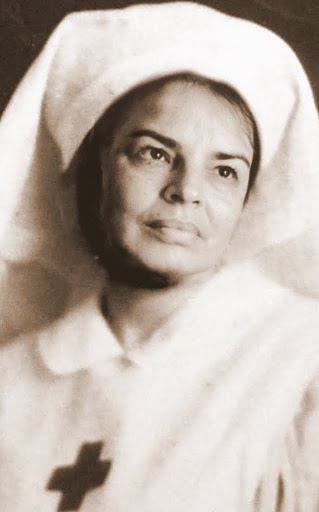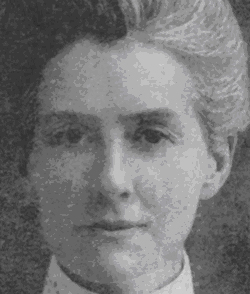
Julie
|
When she grew up, in the 19th century, it was not expected
that a girl who liked to paint flowers, play tennis and
dance would die before a German firing squad.
Before World War One, Amy helped her mother,
a vicar's wife, to visit the elderly and the ill; she
also taught children. She then decided to become a nurse.
During her professional training at Royal London Hospital,
Amy was often in trouble for tardiness, but she was
a brilliant nurse. She saved hundreds of patients in
a typhoid epidemic and was invited to Belgium to help
set up nursing schools.
In Belgium, she pioneered the importance of follow-up
care, and through her school provided trained nurses
for three hospitals, 24 communal schools, and 13 kindergartens.
Her students thought the world of her.
She also met her beloved husband there who was a foreign
correspondant for a London newspaper.
She was on vacation at home in Norfolk in August, 1914,
when she learned that Germany had invaded Belgium. Without
a thought for herself, she caught the train to London
and a boat across the Channel, heading straight into
the war zone.
Arriving back, she organised her nursing students. They
worked in a Red Cross Hospital where every wounded soldier
received
attention and care no matter what his nationality. They
saved German as well as British lives.
When Brussels fell and British troops retreated, Amy
remained. When Brussels fell and British troops retreated,
Amy remained.
Her husband was killed at the front whilst reporting
there and Amy threw herself into her work.
Two British soldiers found their way to her and Amy
sheltered them then helped them escape to the neutral
Netherlands. Other Allied soldiers came to her for help.
Philippe Baucq, an architect in his mid-30s, organised
guides who led the British soldiers to safety. They helped
two hundred soldiers to escape.
Amy knew the risk she took in harbouring them. "Had
I not helped", she said later, "they would
have been shot".
Someone betrayed them and she was subsequently arrested
by the Germans. Under interrogation, she remained
calm and silent.
The Germans told her that other members of the team had
confessed. Believing them, she honestly told them what
she had done. For her, the protection and smuggling out
of hunted men was the moral equivalent of caring for
the sick and wounded.
The Germans sentenced her to death by firing squad.
The American and Spanish ambassadors to Belgium
made frantic
efforts to save her, but the Germans refused to alter
their decision.
On the morning of October 12th, 1916, Amy and
the architect Philippe Baucq were led from their cells
to the yard where the firing squads waited.
Amy said, "Tell my
loved ones that my soul, as I believe, is safe, and that
I am glad to die for my country."
She was buried in a small tended grave where, it was
later said, the flowers grew over her just like the ones
in paintings she
had imagined as a child.

This
story is based upon the true account of the life story
of Edith Cavell
but was adjusted to fit into the original Anser's
Family tree. |

